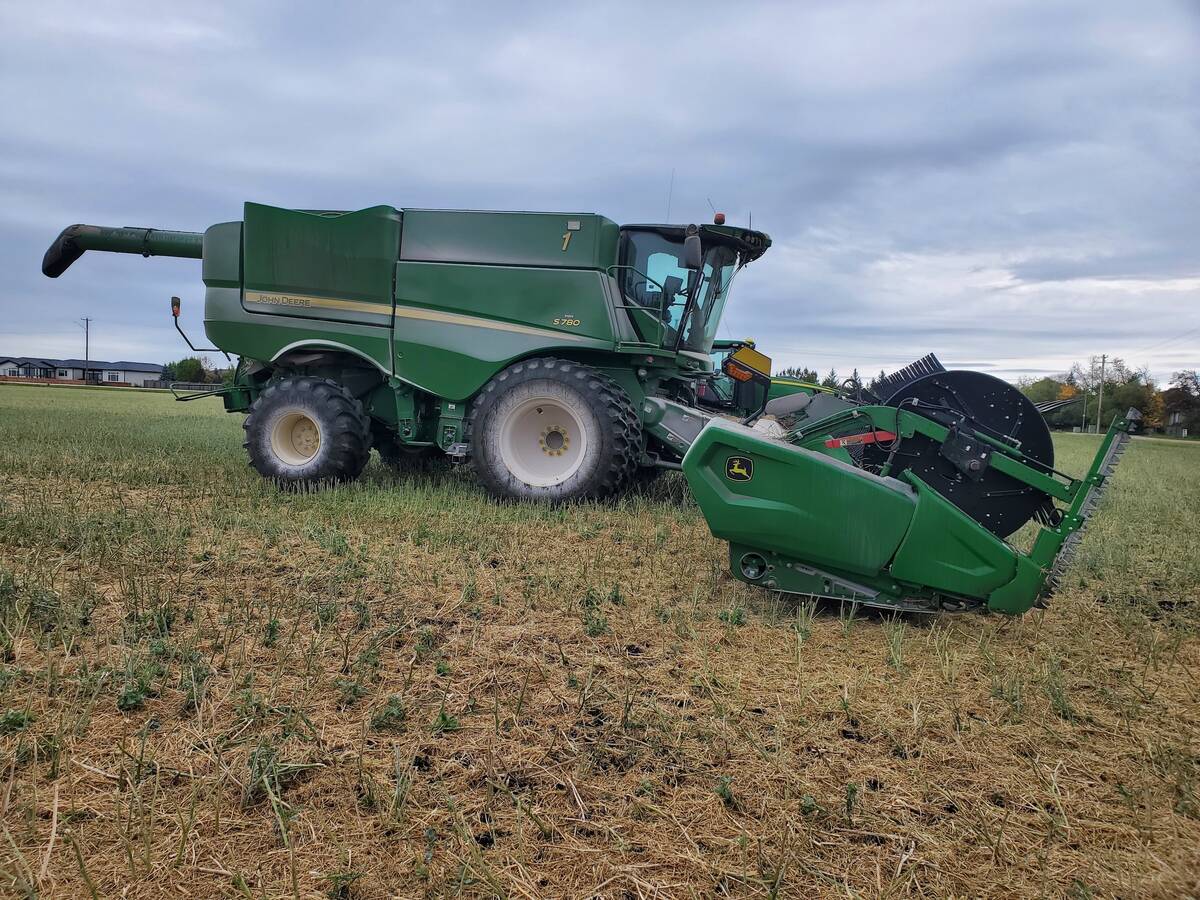The worst of Saskatchewan’s flooding appeared to be over May 2; most river flows were dropping and lakes had crested.
A wild winter-like storm April 30 and May 1 dumped snow on southeastern Saskatchewan in an area bordered by Weyburn, Indian Head, Yorkton and Swan River, Man., stranding travellers and knocking out power and telephone service.
Officials said they didn’t yet know how much water was in that snow.
If anything, the snowfall would extend the duration of flooding but not add to the peaks, said John Fahlman, the Saskatchewan Watershed Authority’s acting director of basin operations.
Read Also

Powdery mildew can be combine fire risk
Dust from powdery mildew can cause fires in combines.
However, cold weather last week likely did contribute to an easing of flood expectations in the southwest.
Fahlman said the authority is still keeping an eye on the Frenchman River system. Flow is declining, but the volume of water is still large.
“We’re feeling more comfortable saying that the earlier predicted peak is not going to be anywhere near as high.”
Flooding in low-lying areas is still likely to occur, but communities such as Eastend might be out of the woods.
The watershed authority planned to examine more data from the water systems May 2 and revise its forecasts the following day.
The lakes in the Qu’Appelle Valley, which reached record levels, are all receding. However, it will take months for water levels to return to normal. Last Mountain Lake will still rise about 20 centimetres over the next couple of weeks.
Wind from the weekend storm created waves 2.5 metres tall on Katepwa Lake, causing water to go over dikes erected by community residents and cabin owners. Part of a
sandbag wall nearly two kilometres long and more than a metre high was breached, causing significant flooding and disappointment.
Duane McKay, the province’s director of emergency response, said teams from social services and health are now helping people cope with the stress.
He said people have been working around the clock filling sandbags and trying to protect property. In some cases, that was in vain.
Thirty-three communities are now eligible for provincial disaster assistance.
Twelve are operating under local emergency declarations, including the town of Kipling where the sewer lift station was affected.
McKay said social services is helping three families from the Rural Municipality of North Qu’Appelle who were forced from their homes, along with two people from Lebret, five from Cowessess First Nation, three from Ochapowace First Nation and 46 people from 15 families on the Sakimay First Nation.
He said access roads to most places have taken a beating, which is causing problems getting in and out of areas.
SaskEnergy is concerned that cabins shifting on saturated soil might disturb natural gas lines. It is checking its systems.
Fahlman said the watershed authority is releasing as much water as it can from the Rafferty Reservoir without causing downstream issues. It is within half a metre of being full.

















